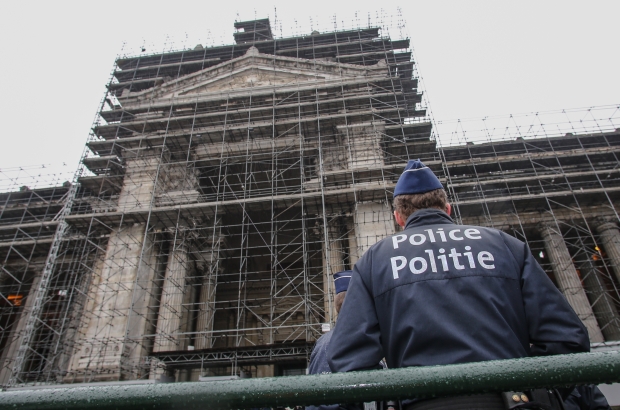- Daily & Weekly newsletters
- Buy & download The Bulletin
- Comment on our articles
Interior of Brussels' Justice Palace to undergo thorough renovation
As a timeframe has finally been set for the 40-year old scaffolding to come off the exterior of Brussels’ iconic Justice Palace, the interior is getting a second glance with the aim of restoring it to its former glory.
The Régie des Bâtiments - the Belgian monuments authority - has appointed a research team to carry out a feasibility study for the total renovation and restoration of the inside of the Brussels law courts.
Much of the courthouse is dated and even deteriorating, with employees relegated to working in specific areas and with the help of individual heaters in the winter and standing fans in the summer.
The research team will start its assignment on 5 June, and will analyse the current state of the building and develop proposals on how to approach future works.
“The Justice Palace is a symbol of our country – but it has been under scaffolding for more than 40 years and the state of its interior requires a thorough restoration,” said Mathieu Michel, secretary of state in charge of the Régie des Bâtiments.
“I am happy to announce that, after the complete restoration of the facades, we will in 2024, when we will take down the first scaffolding on the facade on the Place Poelaert side, initiate the restoration of the inside of the court house in parallel.”
The setting up of a dedicated team comes after an initial report by the Poelaert Foundation and Arts District associations, which Michel said would be used when drawing up a strategy for the restoration.
The plan is for the entire interior of the Justice Palace to be restored, renovated and redecorated as part of the vision note approved by the federal council of ministers in December 2016, which stipulates, among other things, that the courthouse will remain fully functional as the central building of justice in Brussels.
The goal is to restore the original appearance of the courthouse, which is protected as a monument, while at the same time adapting the building to the needs of a modern justice system and contemporary requirements in terms of sustainability and techniques.
A preliminary feasibility study is now being launched which aims to allow a view of the general condition of the building, focusing mainly on the technical aspects and analysing, among other things, the urban planning, historical and heritage aspects, use of materials, stability, fire safety, drainage and technical installations.
This study should determine the challenges and priorities for the restoration and renovation of the interior, working out concrete options for dealing with them and comparing them in terms of cost and feasibility.
The study is expected to be completed by autumn 2024 at the latest.
In the next phase, the needs of the different users of the Justice Palace will be identified, after which a public contract can be launched for the actual restoration and renovation study.
The works themselves will be carried out in several phases because the courthouse must remain operational at all times.
Once the feasibility study is completed, there will be more insight into the cost price and planning for the restoration and renovation of the interior.
The renovation budget is currently estimated at between €100 and €300 million, depending on the extent of the work, with completion scheduled for 2040.
With 160,000m² of offices, corridors and courtrooms, the Justice Palace is one of the largest courthouses in the world.
“We must be proud of this monument to our heritage and provide the means for it to stand the test of time,” Michel said.
“Today, this building is a symbol of failure, because obviously 40 years of scaffolding is not acceptable. But I want to transform it into a symbol of success and achievement.”
The works may not end up being major – works may, for example, include a gutter that has never been repaired, or a water drainage system that is out of kilter and causing entirely avoidable damage - but the research team should uncover a complete list of what needs fixing.
“For a dozen years, we have been fighting with each minister concerned to wake them up and get things moving,” said Jean-Pierre Buyle, a lawyer and former president of the Brussels bar.
“We believe that the time is right: work to remove the scaffolding will finally begin this summer and it's time to move on to renovating the interior to adapt the building to a modern justice system.”
Former magistrate Françoise Tulkens, now vice-president of the European Court of Human Rights, professor at UCLouvain and member of the Quartier des Arts, which financed the preliminary study, agreed.
“It is so important to pursue the renovation to the end because this is the place where justice is dispensed on behalf of the Belgian people,” Tulkens said.
“It's symbolic and very concrete at the same time. Justice must be seen to be done. It is not a secret power. The judicial authority is important because its role is to try to contribute to social peace. And that deserves an architecture to match.”



















